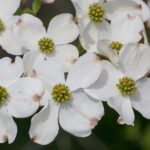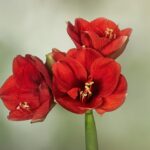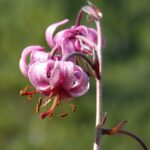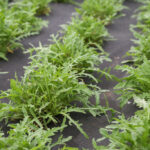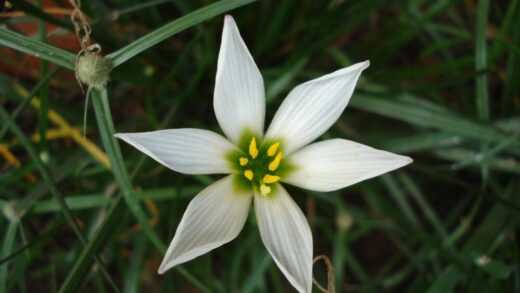The pruning and shaping of the dwarf russian almond

Pruning is a vital horticultural practice that, when performed correctly and at the right time, can significantly enhance the health, vigor, and ornamental appeal of the Dwarf Russian Almond. It is a strategic process of selective removal that serves multiple purposes, from maintaining a desirable size and shape to encouraging prolific flowering and preventing disease. Understanding the specific growth habits of this shrub—particularly its tendency to flower on wood produced in the previous year—is the key to unlocking its full potential through pruning. A thoughtful approach to shaping the plant ensures it remains a well-structured and productive feature in the garden for many years.
The primary rule of pruning the Dwarf Russian Almond revolves around timing. The most critical pruning session should take place immediately after the shrub has finished flowering in the late spring. This is because the plant forms its flower buds for the following year on the new growth that it produces during the summer. If pruning is delayed until late summer, autumn, or winter, the gardener will inadvertently be cutting off the wood that carries next spring’s blooms, resulting in a sparse or non-existent floral display. Post-flowering pruning allows the plant the entire growing season to produce new stems and develop the buds for the subsequent year’s show.
The initial goal of this main pruning session is to address the three “D’s”: removing any wood that is dead, damaged, or diseased. These branches should be cut back to a point of healthy, living tissue. This sanitary pruning is crucial for the overall health of the plant, as it eliminates potential entry points for pests and pathogens and stops the spread of any existing infections. It is a fundamental first step in any pruning task before any shaping or thinning is considered.
Beyond cleaning up the dead and damaged wood, post-flowering is also the time for light shaping and size control. If the shrub has become too large for its space or has developed an awkward shape, this is the opportunity to selectively shorten branches to improve its form. Cuts should be made just above an outward-facing bud to encourage growth that extends away from the center of the plant, promoting a more open and pleasing habit. It is important to avoid shearing the plant into a formal, artificial shape, as this can destroy its natural, graceful arching character.
Rejuvenation pruning for older shrubs
Over time, an older Dwarf Russian Almond shrub can become overgrown, dense, and less productive, with fewer flowers concentrated on the younger, outer growth. When this occurs, a more intensive type of pruning known as rejuvenation or renewal pruning can be employed to reinvigorate the plant. This process involves systematically removing the oldest, thickest, and least productive stems, which are often darker in color and may have peeling bark. This thinning of the old wood encourages the plant to produce new, vigorous shoots from the base.
More articles on this topic
Rejuvenation pruning is best done gradually over a period of about three years. In the first year, after flowering, identify and remove about one-third of the oldest stems, cutting them right back to the ground level or as close to the base as possible. This opens up the center of the shrub to better light penetration and air circulation. The remaining stems will continue to flower and provide a framework for the plant while the new shoots begin to grow.
In the second year, another third of the old, original stems should be removed, again cutting them back to the base. By this point, the new shoots that grew in the previous season will be developing, and the plant will be a mix of old and new wood. In the third year, the last of the original old stems are removed, completing the renewal process. The result is a completely rejuvenated shrub with a new, more productive framework of younger stems, all without ever leaving a large, bare spot in the garden.
This gradual approach to renewal pruning is far less stressful for the plant than cutting the entire shrub down to the ground at once, a more drastic technique that should be reserved for only the most severely overgrown and neglected specimens. Regular, gradual rejuvenation every few years ensures the Dwarf Russian Almond maintains its vitality, continues to flower prolifically on vigorous new wood, and remains a healthy, well-structured plant over its long lifespan.
Managing suckers and unwanted growth
The Dwarf Russian Almond has a natural tendency to produce suckers, which are new shoots that arise directly from the root system at some distance from the main crown of the plant. If left unchecked, these suckers can cause the shrub to spread and form a thicket, which may not be desirable in a more formal garden setting. This suckering habit can also divert energy away from the main plant, potentially reducing its flowering capacity. Therefore, regular removal of suckers is an important part of maintaining the shrub.
More articles on this topic
Suckers should be removed as soon as they are noticed. The most effective way to do this is not to simply cut them at ground level with pruners, as this often encourages multiple new shoots to grow from the remaining stub. A better method is to excavate the soil slightly to expose the point where the sucker attaches to the main root and then pull or tear it off. This tearing action removes the latent buds at the base of the sucker, making regrowth in that same spot less likely.
In addition to root suckers, it is also important to prune out any branches that are growing in an undesirable direction. This includes branches that are crossing over and rubbing against others, as this can create wounds in the bark that serve as entry points for diseases. Branches that are growing back towards the center of the shrub should also be removed. The goal is to create a framework of well-spaced branches that allows for good air circulation and light penetration throughout the entire plant.
This type of maintenance pruning can be done at any time of the year when the problem is spotted, though the dormant season or the post-flowering period are ideal. Consistent management of suckers and wayward branches keeps the Dwarf Russian Almond looking tidy and well-contained within its allotted space. It focuses the plant’s energy on its main structure, supporting better health and more abundant flowering on the primary framework of the shrub.
📷 Le.Loup.Gris, CC BY-SA 3.0, via Wikimedia Commons








